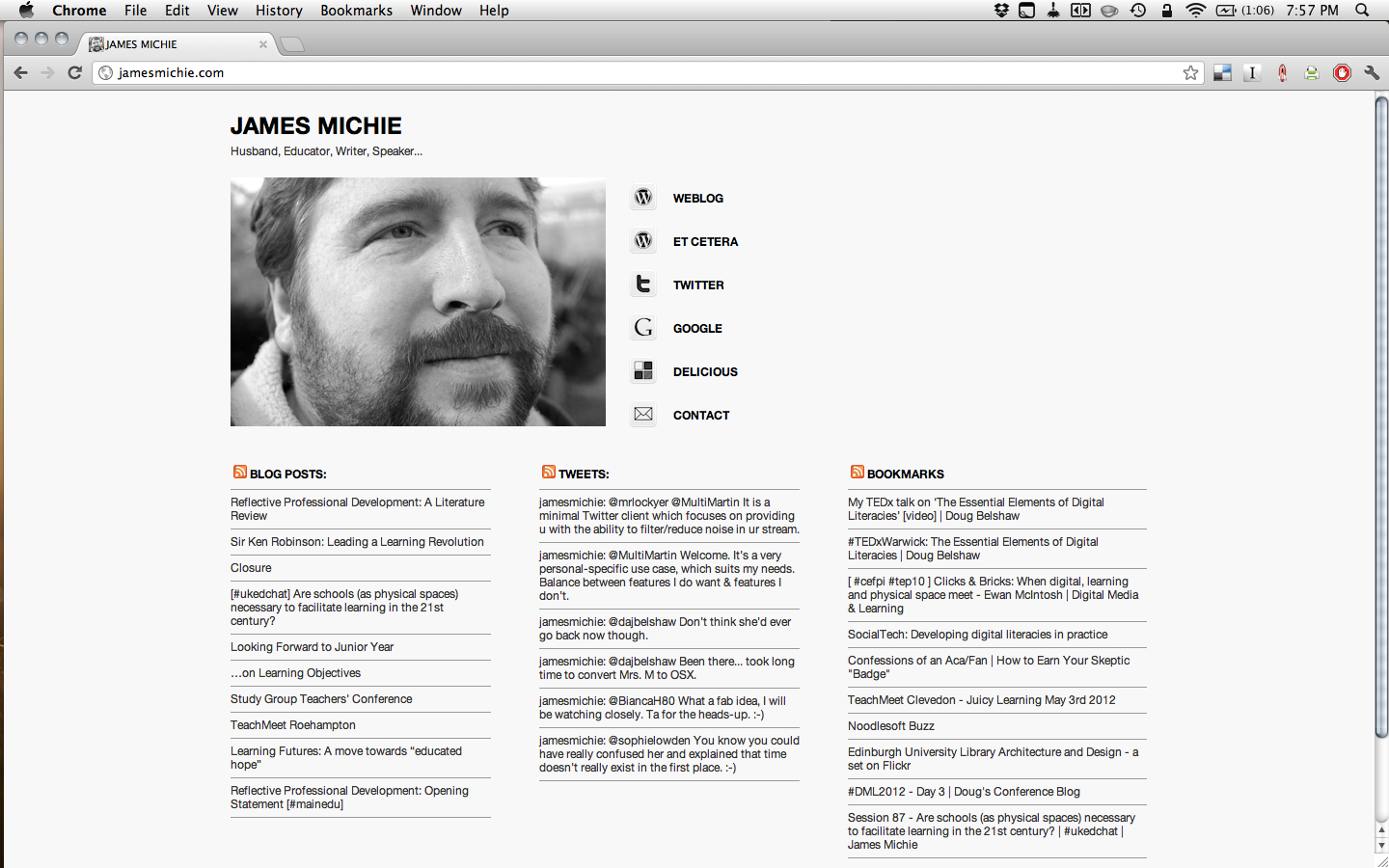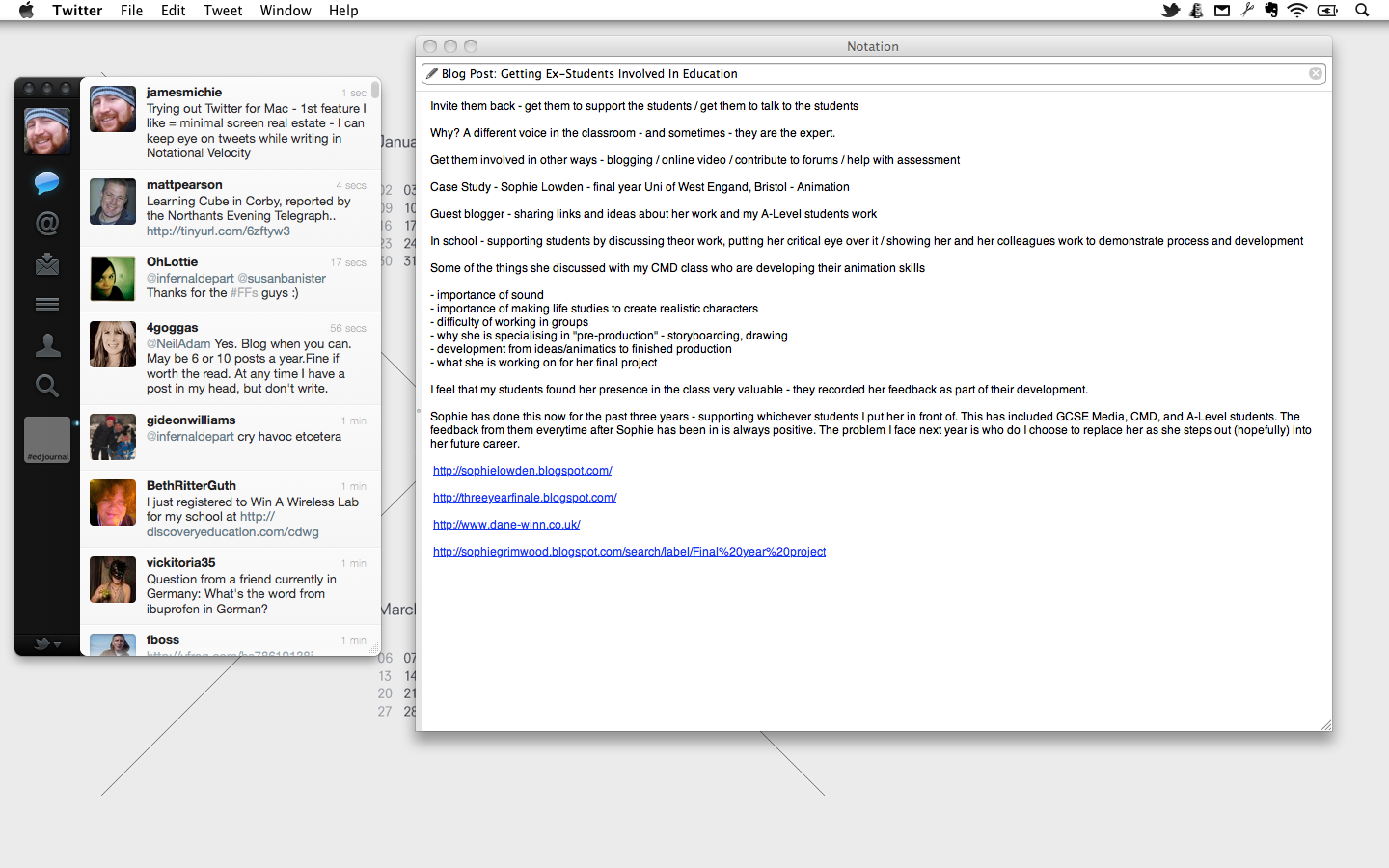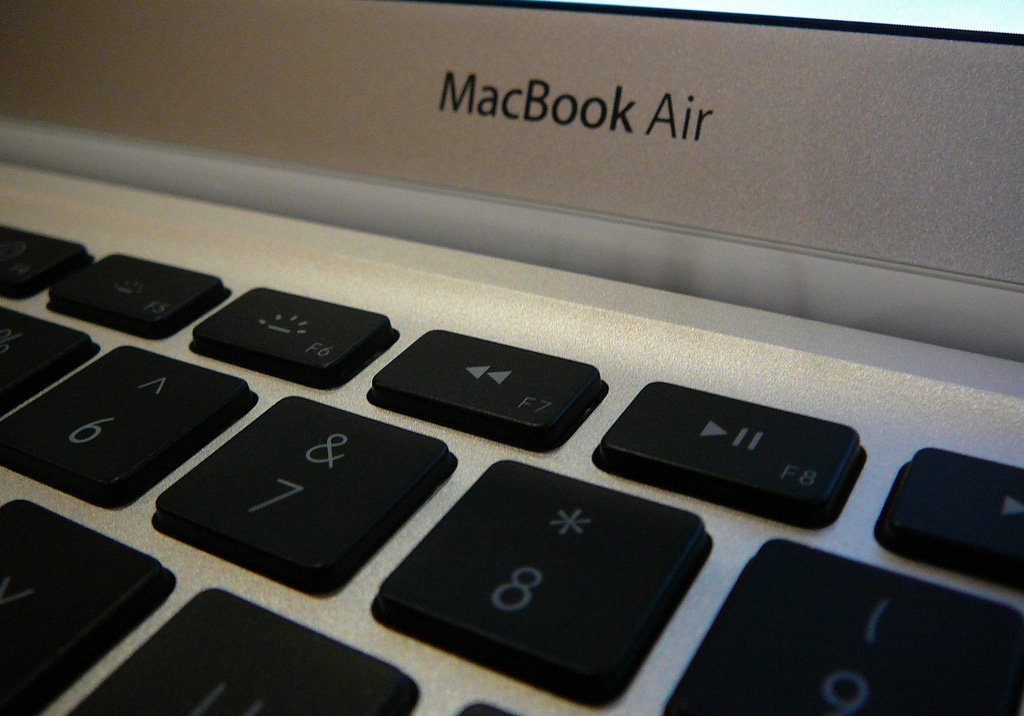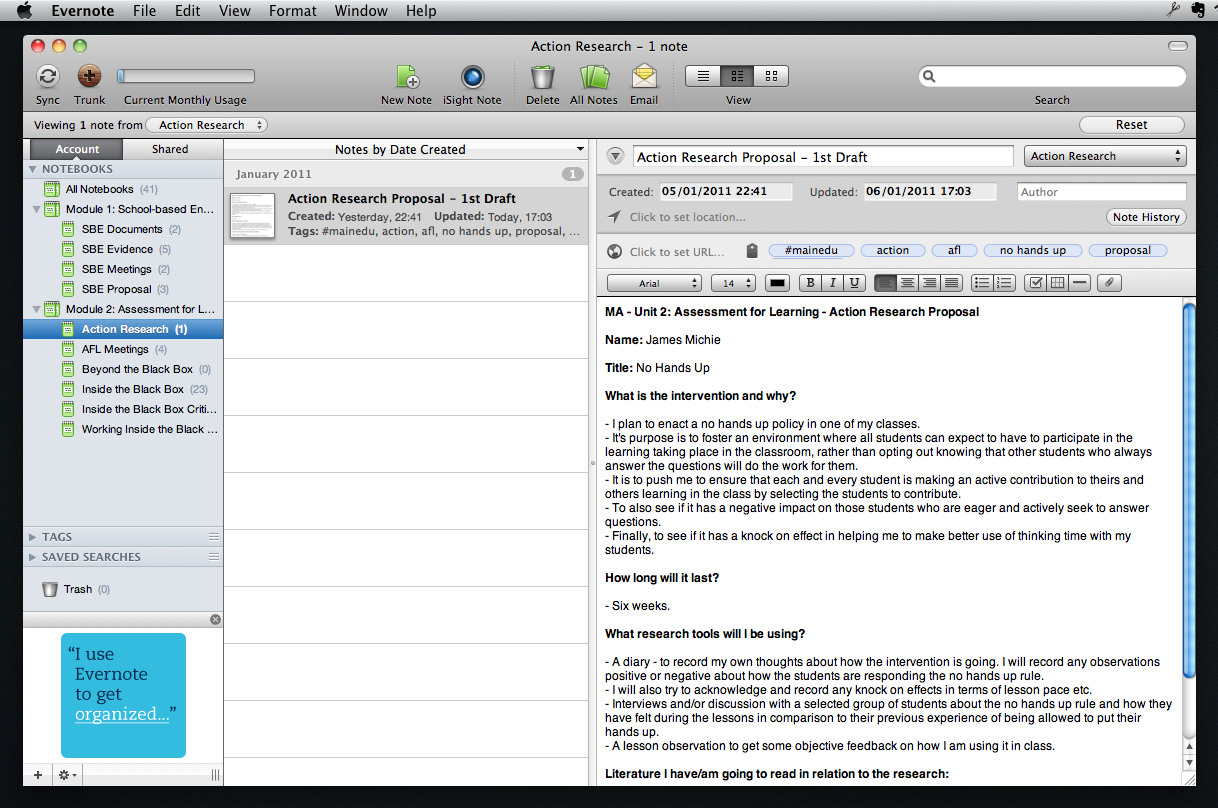Since part way through last year, I have been working on leveraging control over both my digital identity and digital self. This has included closing a number of accounts, redesigning my home page, this blog, and leaving Facebook again. It has entailed making some tough decisions about which social networks I will invest time into; which apps and services I am prepared to share my data with.
This process has, and continues to be motivated by two values:
First, it is important to own as much of your own data as possible. Too many of us invest time in various apps, networks and other online tools, without considering whether or not we will be able to get that data out, should we decide to stop using them.
Second, it is important to give mindful consideration to the information that you publish online, as this is how many people will form their opinion of you. For all intents and purposes, your digital self is like a brand. It needs to be cultivated and cared for. It is therefore, my intention to ensure that brand ‘James Michie’ is well cultivated.
It was with these principals in mind that I decided to move my ‘other’ blog ‘Et cetera’ from Posterous and integrate it with my main blog.
Twitter’s recent acquisition of Posterous, provided the final push I needed to make this move… one that I had considered doing last year. Do I think that Twitter is going to shut down Posterous? I am not sure but the signs are not great. Recent trends on the web would also suggest that either the service will fall into neglect or eventually close.
In making the move, I decided that it was also an opportunity to do some cleaning up. Before importing the blog, I removed any content which I felt did not fit in effectively with my main blog; this included the remnants of a failed #365 project and a few other posts.
If you were a subscribed to Et cetera, then please consider subscribing to this blog either by RSS or Email.
Owning your data and caring for your digital self is very important. Putting in, what I believe to be a reasonable amount of effort, has allowed me to take (greater) ownership of my data, and to better establish the version of my digital self that I wish for people to engage with. I encourage you to do the same.






